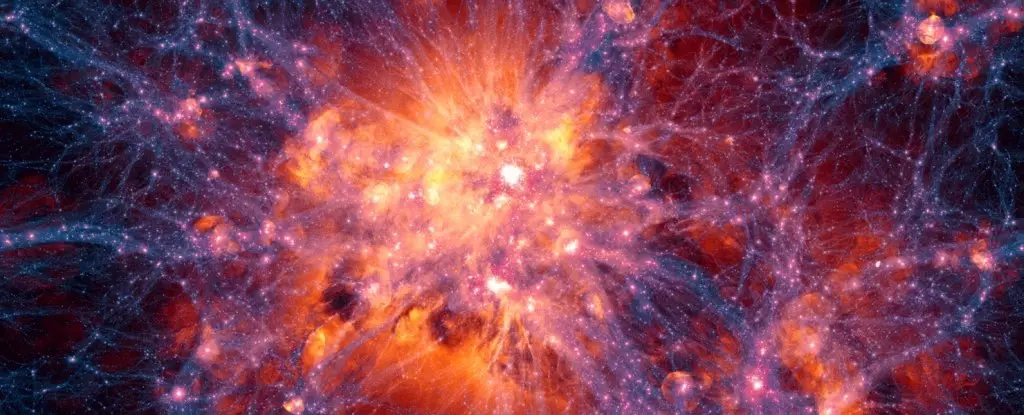Albert Einstein’s theory of general relativity, proposed over a century ago, continues to be a cornerstone of modern physics. Recently, a monumental collaborative effort among astronomers has tested this theory against the backdrop of approximately 11 billion years of cosmic history. By meticulously mapping the distribution of nearly 6 million galaxies, the team has gathered compelling evidence that reinforces the predictions set forth by Einstein. This monumental investigation is one of the most extensive evaluations of general relativity, thereby establishing a robust framework for understanding gravitational forces at both the cosmic and subatomic scales.
Gravity is a fundamental force that shapes the universe. Although its mechanics are still shrouded in mystery—especially regarding its connection to dark matter and dark energy—it acts as a binding agent within the cosmos. The latest findings illustrate how galaxies form intricate strands within a cosmic web, counterbalancing the ongoing expansion of the universe. This web comprises vast filaments of gravitational fields that serve as highways for cosmic matter, established largely under the influence of dark matter. The gravitational clumping, as suggested by the new findings, aligns seamlessly with Einstein’s predictions about the structure of the universe.
Led by the Lawrence Berkeley National Laboratory, the Dark Energy Spectroscopic Instrument (DESI) is at the forefront of uncovering the universe’s substantial mysteries. Operational since 2019, DESI leverages advanced technologies to meticulously catalog the observable universe. By analyzing data from its first year, the collaboration conducted a comprehensive survey of 5.7 million galaxies and quasars, capturing their evolution and distribution across the vast stretches of time. The results affirm that observations of cosmic structures are not just consistent with general relativity, but that the very framework developed from Einstein’s theories can expansively describe the growth and arrangement of galaxies on an astronomical scale.
The implications of the DESI results extend far beyond mere cosmic mapping. The findings not only support the theory of general relativity but also provide insights into ongoing debates within astrophysics, particularly concerning dark energy and dark matter—two elusive components that together comprise approximately 95% of the universe’s total mass-energy content. This ongoing inquiry aims to illuminate the mechanisms driving the universe’s accelerated expansion, along with setting constraints on elusive particles such as neutrinos. The comprehensive data acquired thus far conveys that even slight modifications in gravitational force could substantially alter the universe’s observable properties, highlighting the sensitivity of cosmic structures to gravitational influences.
As the DESI collaboration pushes forward with its research, they anticipate collecting data on over 40 million galaxies and quasars, which will deepen our understanding of the universe’s architecture. Each piece of data accumulated is like a puzzle piece fitting into a grand picture. Physicists are particularly intrigued by what these findings may unveil regarding dark matter and dark energy, which remain among science’s most confounding mysteries. According to physicist Mark Maus, the sheer potential of systematically capturing the universe’s vast complexities is exhilarating, as it opens new avenues to tackle fundamental questions that have puzzled scientific minds for ages.
The enduring legacy of Einstein’s general relativity continues to be validated through modern scientific efforts, such as those conducted by the DESI team. The alignment of observational data with theoretical predictions reassures us that even the most intricate workings of the cosmos are governed by consistent and predictable laws. As researchers delve deeper into the stellar intricacies of galaxies, their collaboration promises not only to enhance our comprehension of the universe but also to potentially illuminate the paths leading toward the resolution of deeper philosophical questions surrounding gravity, mass, and the enigmatic forces that govern cosmic expansion. Indeed, as we embark on this cosmic journey, every new discovery brings us closer to understanding the vast, unfathomable universe we inhabit.


Leave a Reply